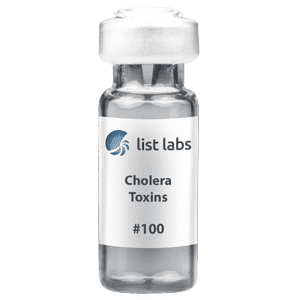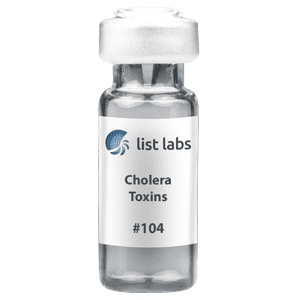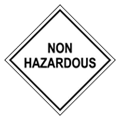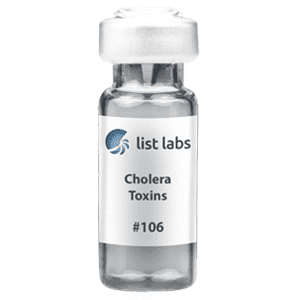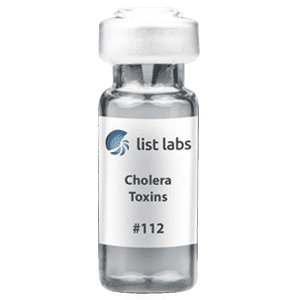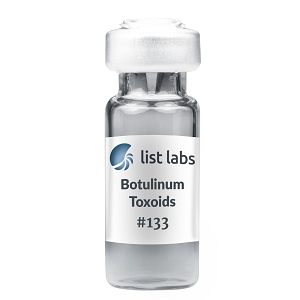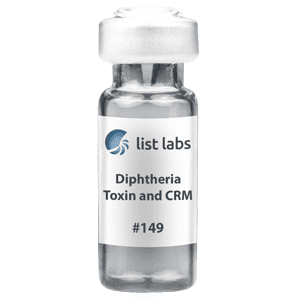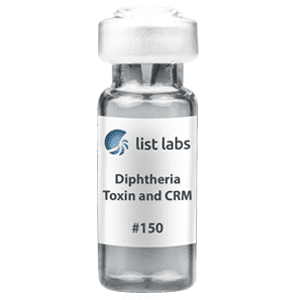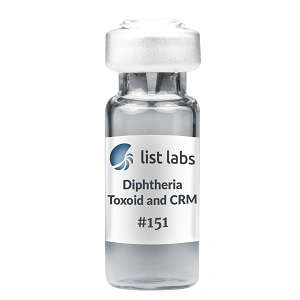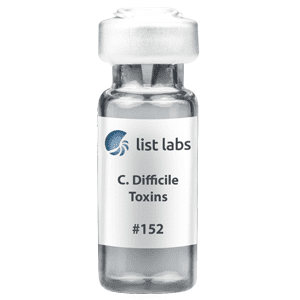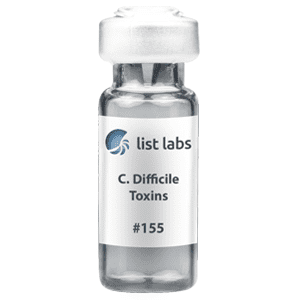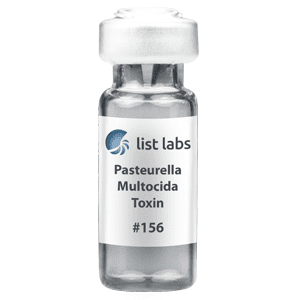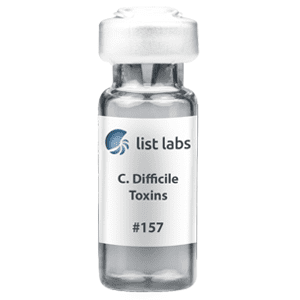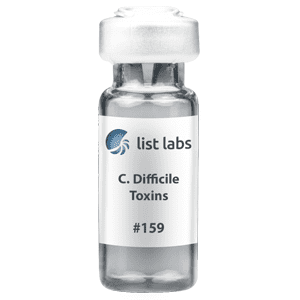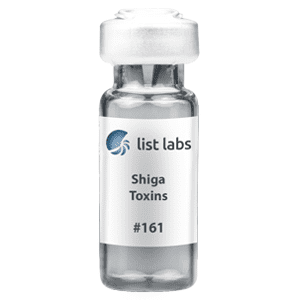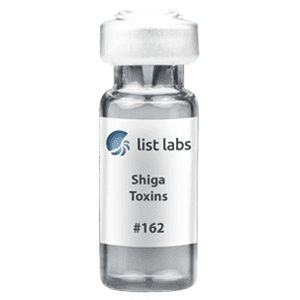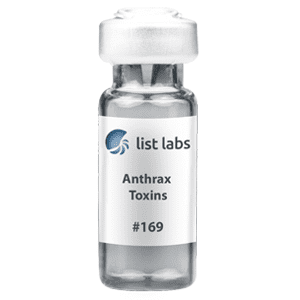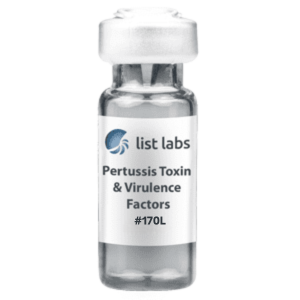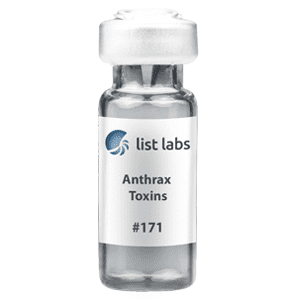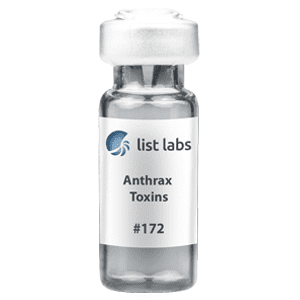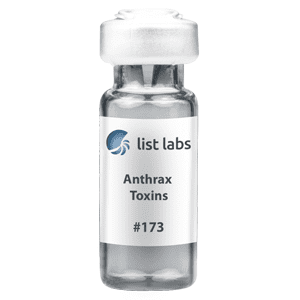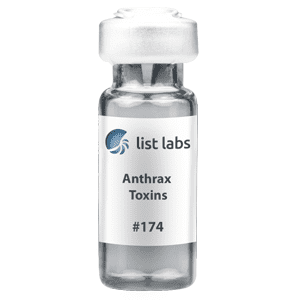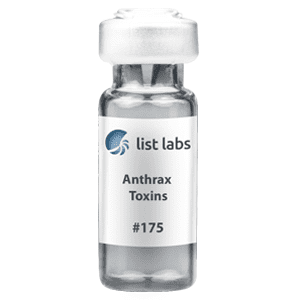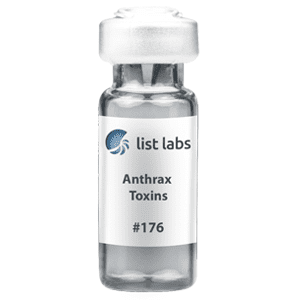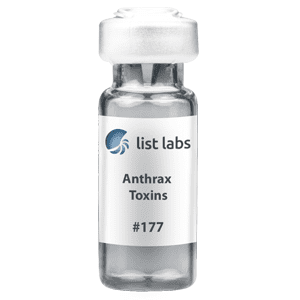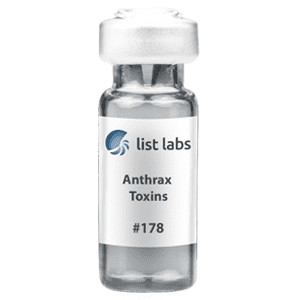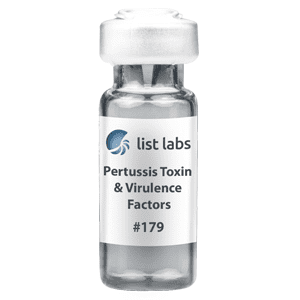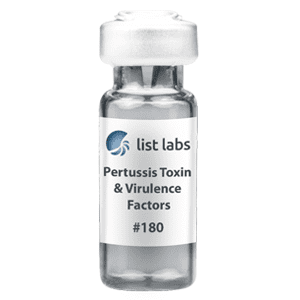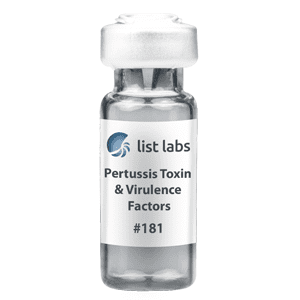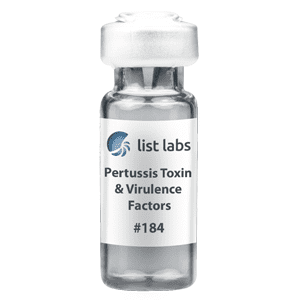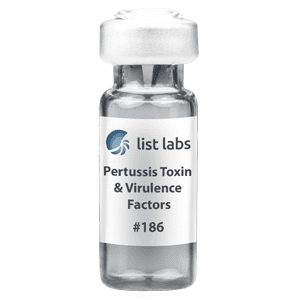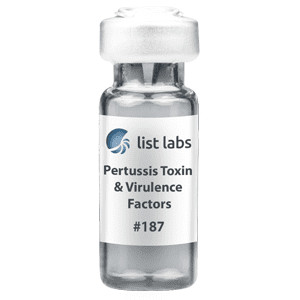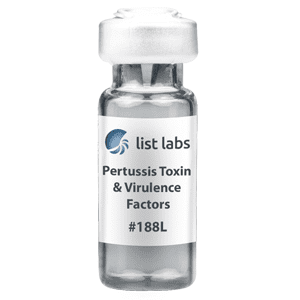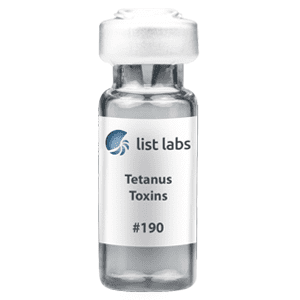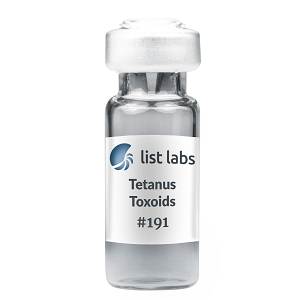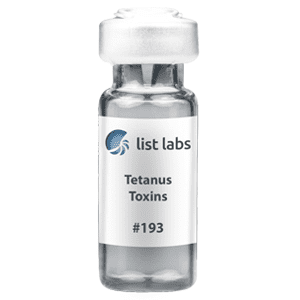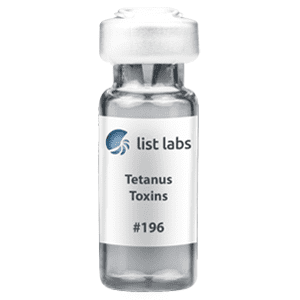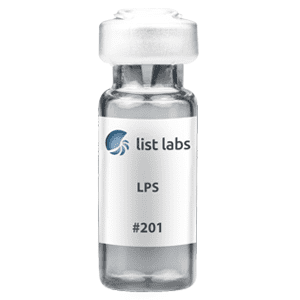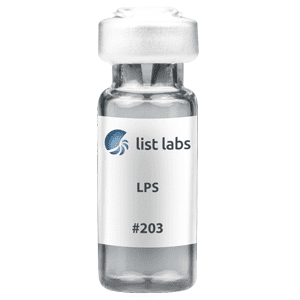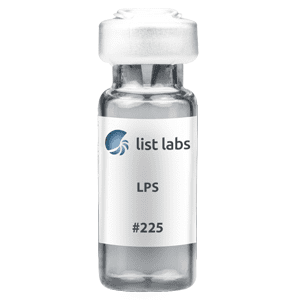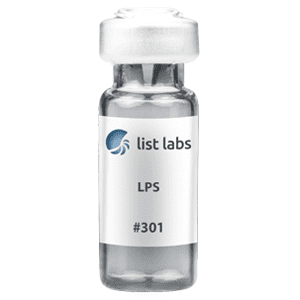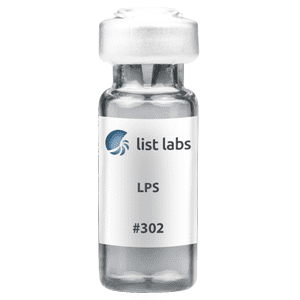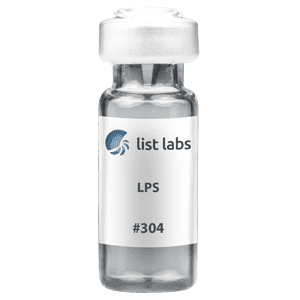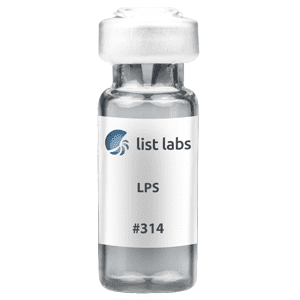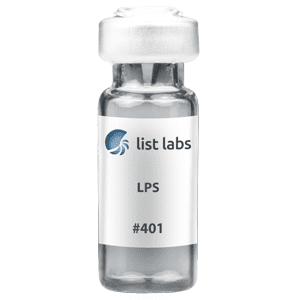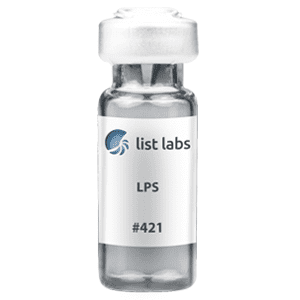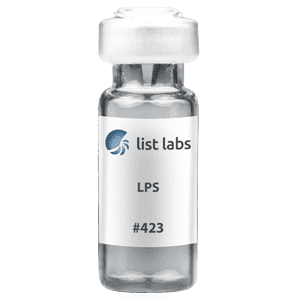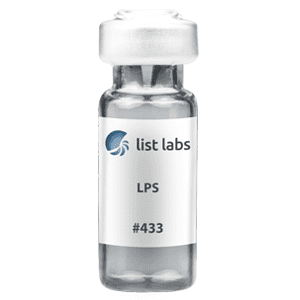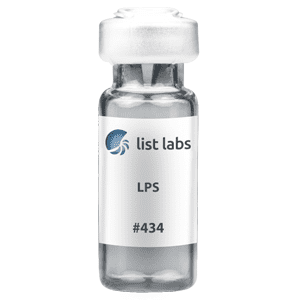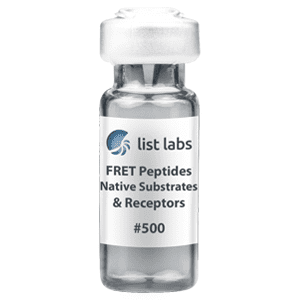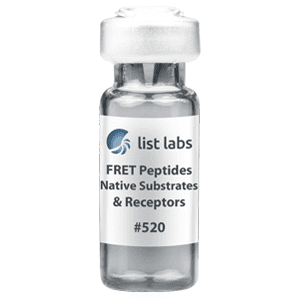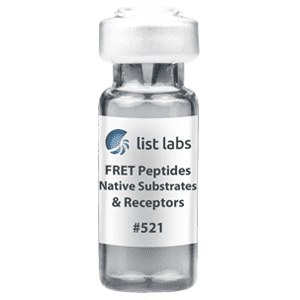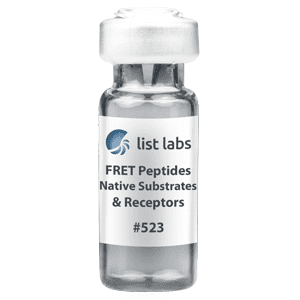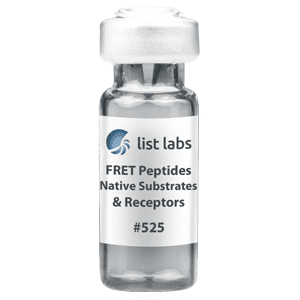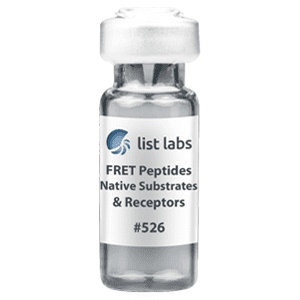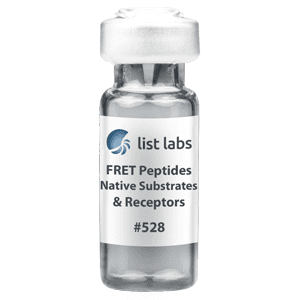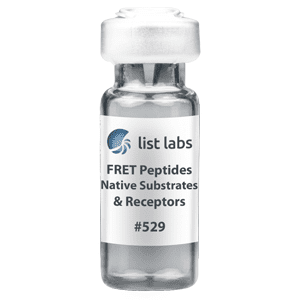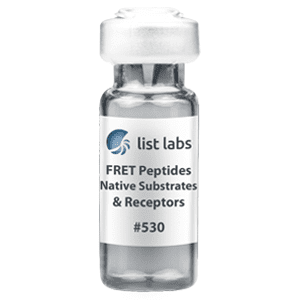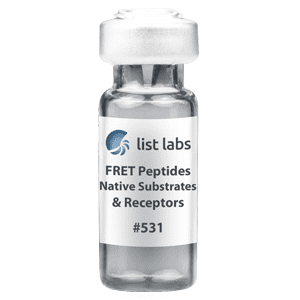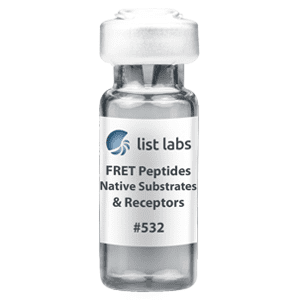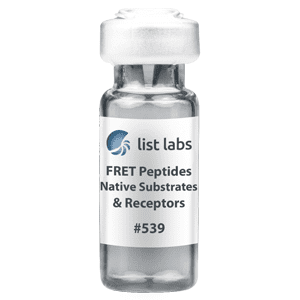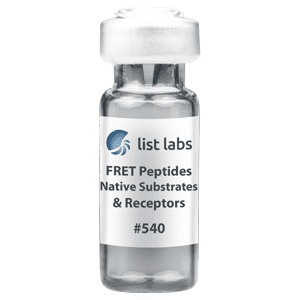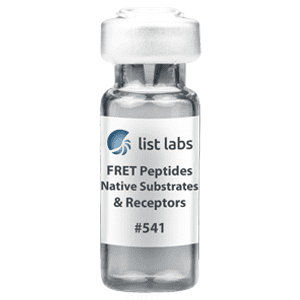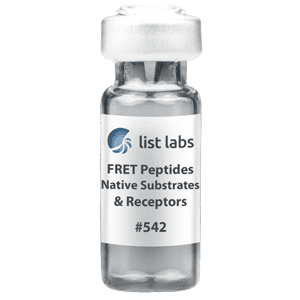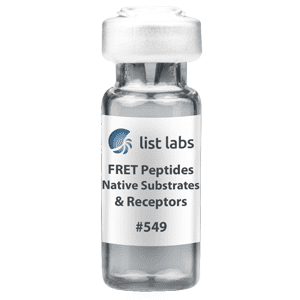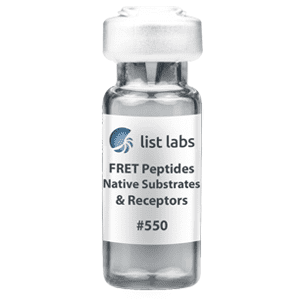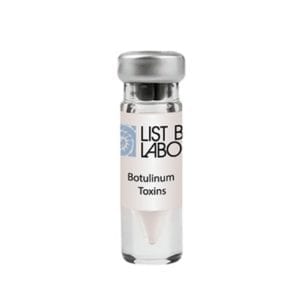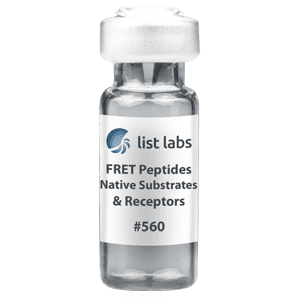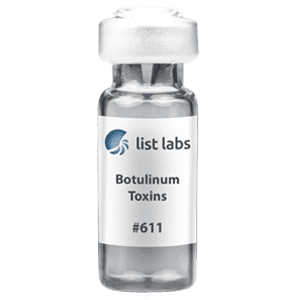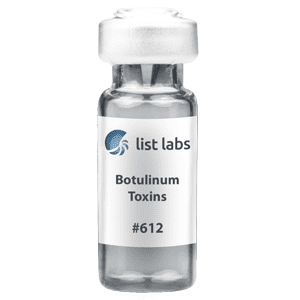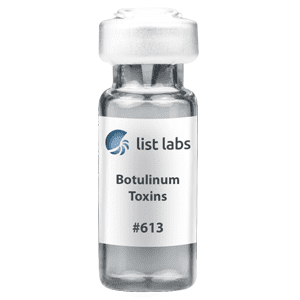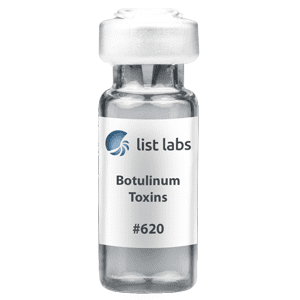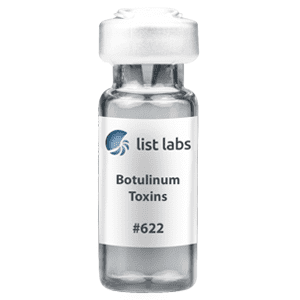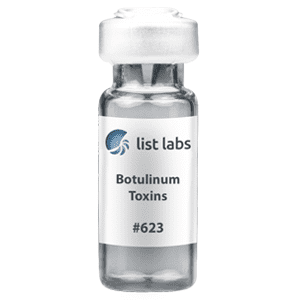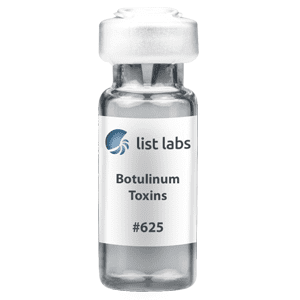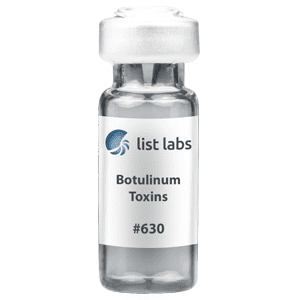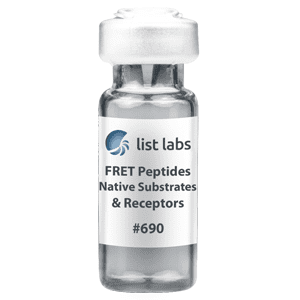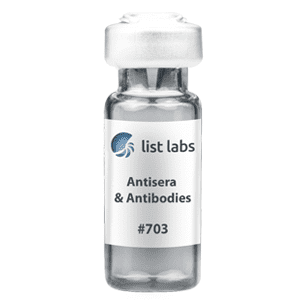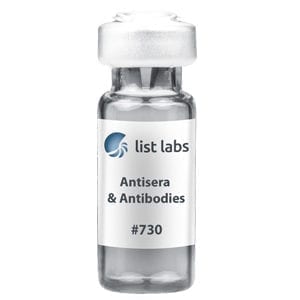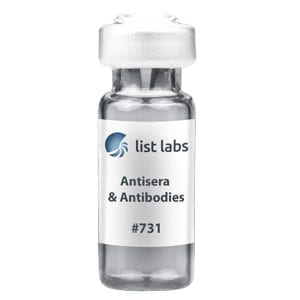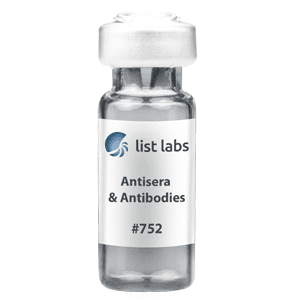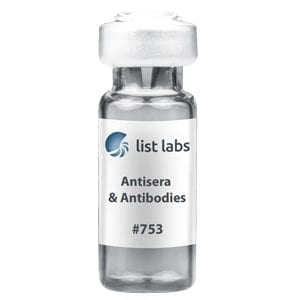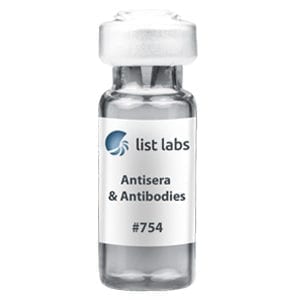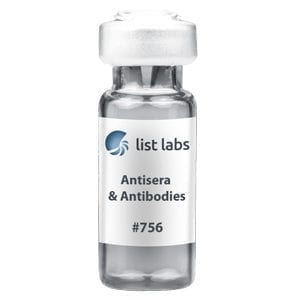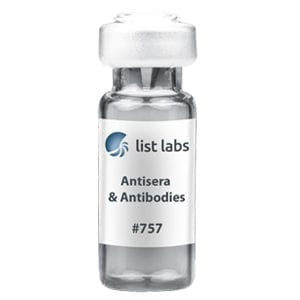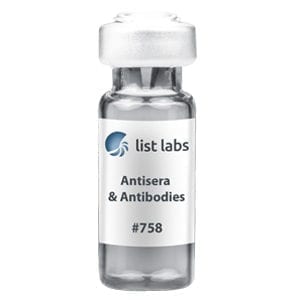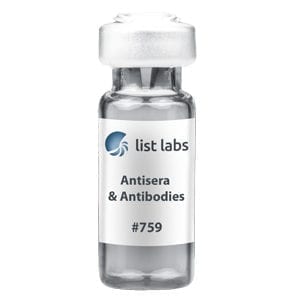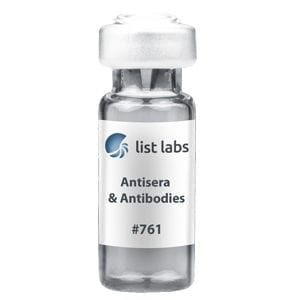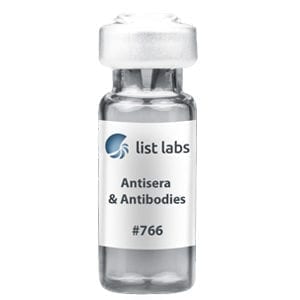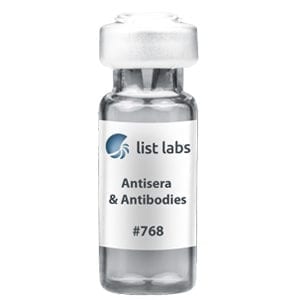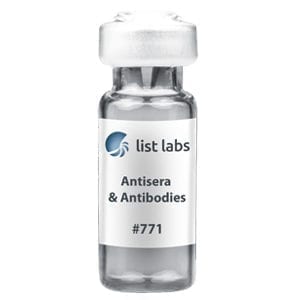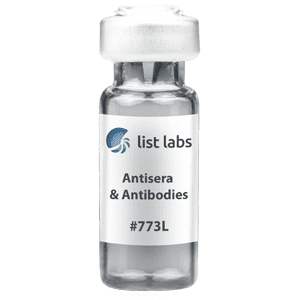Have a specific question about your LBP project? Click below and let’s get started.
Bacterial Toxins
Buy Bacterial Toxins
- Products
- Information
- Related Citations
- Related Blog
#100B (1 mg)
$375.00
$600.00
$300.00
#112 (0.2 mg)
$695.00
#133L (Liquid)
Botulinum Neurotoxin Type A Toxoid from Clostridium botulinum
This product is discontinued.#149A (0.25 mg)
$525.00
$783.00
#151 (0.5 mg)
$905.00
#152C (100 ug)
$620.00
#155L (liquid)
$995.00
#156 (50 ug)
$555.00
#161 (10 ug)
$600.00
#162L (Liquid)
$955.00
#169L (Liquid)
Anthrax Lethal Factor (LF-A), Recombinant from B. anthracis Native Sequence
This product is Out of stock.#170L (Liquid)
$450.00
#171E (0.5 mg)
Anthrax Protective Antigen (PA), Recombinant from B. anthracis
Product # 171 is the entire 83 kDa native protein; This product contains the entire anthrax protective antigen 83 kDa native protein.$770.00
#172B (1 mg), #172L (1 mg),
$775.00 – $1,025.00Price range: $775.00 through $1,025.00
$980.00
#174 (0.5 mg)
Anthrax Protective Antigen, Activated (PA 63) from B. anthracis
Product # 174 is PA63, which has been created by enzymatic digestion and purified;$625.00
#175 (50 ug)
Anthrax PA 63 - FITC Conjugate
Product # 175 is purified PA63 conjugated to FITC for visualization.$475.00
$1,050.00
#177A (50 ug), #177B (.25mg),
Anthrax Protective Antigen Fragment (PA 20) from B. anthracis
Product # 177 is PA20, the approximately 20 kDA fragment cleaved from PA; and$355.00 – $675.00Price range: $355.00 through $675.00
#178A (0.1 mg)
$205.00
#179A (50 ug)
$505.00
$500.00
$510.00
#188L (Liquid)
$505.00
#190A (25 ug), #190B (100 ug),
$300.00 – $870.00Price range: $300.00 through $870.00
#191A (25 ug), #191B (100 ug),
$460.00 – $1,315.00Price range: $460.00 through $1,315.00
#193 (10 ug)
$750.00
#196A (10 ug)
Tetanus Toxin C-Fragment from Clostridium tetani, FITC Conjugate
This product is discontinued.#201 (5 mg)
$325.00
#203A (2.5 mg)
$360.00
#225 (5 mg)
$220.00
#302 (5 mg)
$200.00
#304 (5 mg)
$220.00
#314 (1 mg)
$200.00
$240.00
#500A (100 ug)
SNAP-25 Recombinant Protein Substrate for C. botulinum Types A and E Neurotoxin
This product is discontinued.$970.00
#521 (200 nmoles)
SNAPtide® Peptide Substrate (FITC/DABCYL) for C. botulinum Type A Neurotoxin
This product is discontinued.$600.00
$600.00
#526 (200 nmoles)
Control Peptide for SNAPtide® 521 for C. botulinum Type A Neurotoxin
$600.00
#528 (50 nmoles)
Unquenched Calibration Peptide for SNAPtide® 521 Substrate for C. botulinum Type A Neurotoxin
This product is discontinued.$250.00
#530 (200 nmoles)
MAPKKide® Peptide Substrate (o-Abz/Dnp) for Anthrax Lethal Factor
Product # 530 is MAPKKide® utilizing the o-Abz/Dnp FRET pair. A calibration peptide, Product #539 is available for convenient use with the quenched substrate.$365.00
#531 (200 nmoles)
MAPKKide® Peptide Substrate (DABCYL/FITC) for Anthrax Lethal Factor
This product is discontinued.Product # 531 is MAPKKide® with the FRET pair DABCYL/FITC.#532 (100 nmoles)
MAPKKide® Plus (AMC) Specific Substrate for Anthrax Lethal Factor
Product # 532 is MAPKKide® Plus Specific Substrate for Anthrax Lethal Factor. This peptide is remarkable in its resistance to non-specific cleavage by enzymes which may be present in natural samples. MAPKKide® Plus carries the fluorophore 7-amido-4-methylcoumarin (AMC).$305.00
#539 (50 nmoles)
Unquenched Calibration Peptide for MAPKKide® 530 for Anthrax Lethal Factor
This product is discontinued.#540 (200 nmoles)
VAMPtide® Peptide Substrate (o-Abz/Dnp) Substrate for C. botulinum Type B Neurotoxin
MADE TO ORDER, Please Inquire.$600.00
$600.00
$205.00
#550 (100 nmoles)
SNAP Etide® Peptide Substrate (o-Abz/Dnp) for C. botulinum Type E Neurotoxin
MADE TO ORDER, Please Inquire.#559 (50 nmoles)
$290.00
$555.00
$310.00
#612A (50 ug)
Botulinum Neurotoxin Type A Heavy Chain, Recombinant, Binding Domain
This product is discontinued.#613A (50 ug)
Botulinum Neurotoxin Type A Heavy Chain, Recombinant, Binding Domain, GST Fusion
This product is discontinued.#620A (10 ug)
$555.00
#622A (50 ug)
Botulinum Neurotoxin Type B Heavy Chain, Recombinant, Binding Domain
This product is discontinued.#623A (50 ug)
Botulinum Neurotoxin Type B Heavy Chain, Recombinant, Binding Domain, GST Fusion
This product is discontinued.#625A (10 ug)
$555.00
$1,335.00
#703 (0.1 ml)
$320.00
$435.00
#757A (0.1 mg)
Anti-Clostridium difficile Binary Toxin A subunit (Chicken lgY)
This product is discontinued.#758A (0.1 mg)
Anti-Clostridium difficile Binary Toxin B Subunit (Chicken lgY)
This product is discontinued.#768L (Liquid)
Anti-B. anthracis Lethal Factor (LF-A), lgY Antibody, Biotinylated
Product # 768L affinity purified and biotinylated Anti-Lethal Factor from B. anthracis (chicken lgY) works to detect the LF as described in the C of A.$415.00
#771B (1 mg)
Anti-Protective Antigen from B. anthracis (Goat)
This product is discontinued.Products # 771, purified IgG from goat, is directed to PA.List Labs
540 Division Street
Campbell, California
List Biotherapeutics
9800 Crosspoint BIvd Suite 2011
Indianapolis, IN 46256, USA


- © 2025 List Biological Labs, Inc
- Privacy Policy
- Terms of Use
- Cookie Preferences

